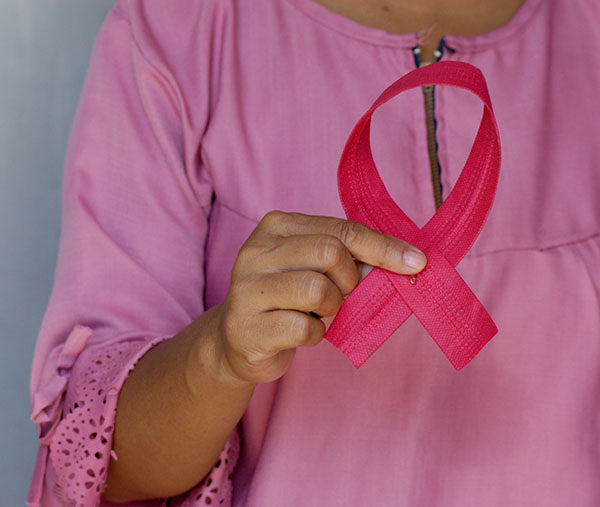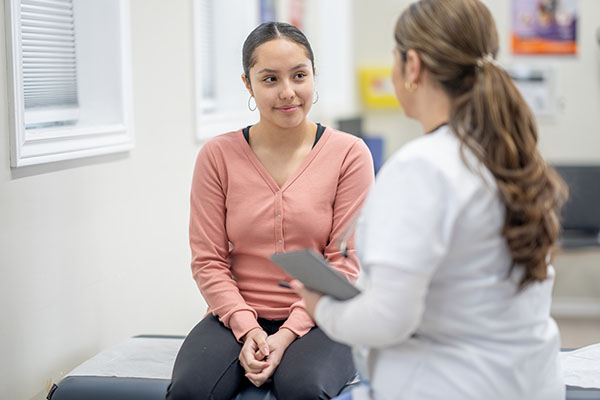Don't Skip This Simple Screening: A Breast Self-Exam Could Save Your Life
By Kristy Warren
When it comes to beating breast cancer, catching it early makes a huge difference, but many women skip one simple screening that could save their life: a monthly breast self-exam.
No two people or breasts are the same. A breast self-exam helps you learn your breasts’ unique characteristics—and knowing what’s normal for you helps you spot potential problems early.
If you have a menstrual cycle, examine your breasts at the same time each cycle, preferably just after your period when your breasts are not as dense. If you don’t have a cycle, pick the same time each month. Through routine exams, you’ll learn what is normal for you.
HOW TO COMPLETE A BREAST SELF-EXAM
- Place your right arm behind your head
- Using your left hand, gently move your fingertips around your right breast in small, circular motions; make sure to feel your entire breast area and into your armpit
- As you continue circling, move from light to medium pressure and finally to firm pressure. Does anything feel sore, lumpy, or unusual?
- In a mirror, look for any dimpling, rashes, or pitting in your breasts
- Squeeze the nipple and check for discharge
- Repeat these steps for your left breast using your right hand, with your left arm positioned behind your head

If you aren’t sure you are doing the self-exam correctly, ask your healthcare provider to perform a breast exam on you, so you can learn the technique firsthand and feel confident performing the exam on your own.
Your Laurel Health Center provider can answer any questions you may have about what to watch for and how to check yourself at home.
If you notice anything unusual, don’t wait—call your healthcare provider and get checked! While Coronavirus COVID-19 has necessitated postponing gatherings and events, one thing you shouldn’t postpone is your health. Don’t put off important screenings like mammograms and breast exams; the Laurel Health Centers have rigorous safety measures in place to see patients safely throughout the pandemic and beyond. To learn more about the steps we take to keep you safe, click here to visit our Coronavirus resources page.
WHEN SHOULD I START SELF-EXAMS?
You should begin monthly breast self-exams in your twenties, but it’s never too late to start! Routinely examining your breasts will help you learn what is normal for you. Knowing what’s normal for your breasts and checking that each month helps you and your provider stay on top of any changes much sooner than solely relying on an annual mammogram.
Make sure to talk to your family doctor if you have any questions or concerns about completing your breast self-exam or with your findings. We’re here to help!
WHEN TO SEE A DOCTOR
It’s normal for your breasts change slightly during your cycle and as you age, but if you experience any of the following changes, make an appointment with your family doctor for further examination:
- Discharge from your nipple(s)
- Lump(s) or thickening breast tissue that does not shift during your menstrual cycle
- Changes in the shape, texture, or size of your breasts
- Changes in the appearance of the skin or nipples
- Discovering any portion of your breast that feels different than it did at this same time during your previous monthly self-exam
While changes in the breast can be the result of benign cysts or non-cancerous tumors called fibroadenomas, you should always have them checked out.
To determine the cause and type of lump, your doctor may order an imaging test like an ultrasound or mammogram and may request a biopsy (i.e., removing a small tissue sample for further testing).

HOW CAN I LEARN MY PERSONAL BREAST CANCER RISKS?
There are many factors that go into determining your overall risk of developing breast cancer, including your age, race, pregnancy, breastfeeding, activity levels, alcohol consumption, and genetics. Remember, while breast cancer is more common in women, both men and women can be diagnosed with breast cancer.
One of the most important ways to determine your personal risk is to discuss your family history and personal medical history with your doctor.
If possible, try to determine who has had breast cancer within the last two to three generations of your family tree and their age at the time of diagnosis.
PROMOTING GOOD BREAST HEALTH
In addition to regular breast self-exams, you can stay on top of your breast health by eating well, exercising, quitting tobacco, and maintaining a healthy weight. Eat a diet high in fiber, vegetables, and fruit, lower your fat and sugar intake, and aim for at least 20 minutes of exercise daily.
Remember, you are the best advocate for your health! By learning what’s normal for you and your breasts, understanding your personal risk for breast cancer, living a healthy lifestyle, and keeping up with your breast health screenings, you are giving yourself your best chance at good breast health.
If you are due for a breast exam, or would like to discuss your personal breast cancer risks, make an appointment with The Laurel Health Centers at 1-833-LAURELHC (1-833-528-7354)or click here to visit our contact page.
